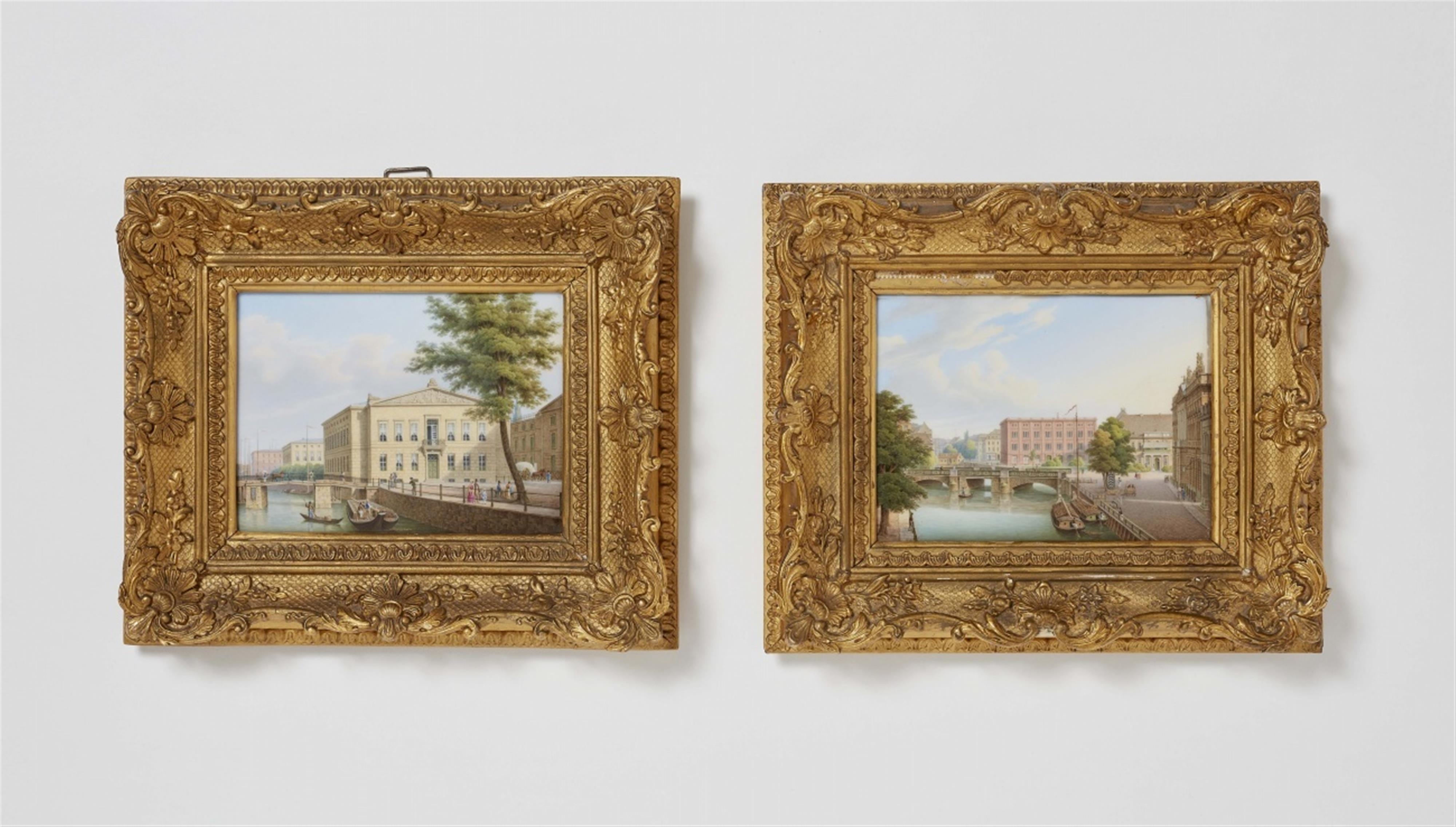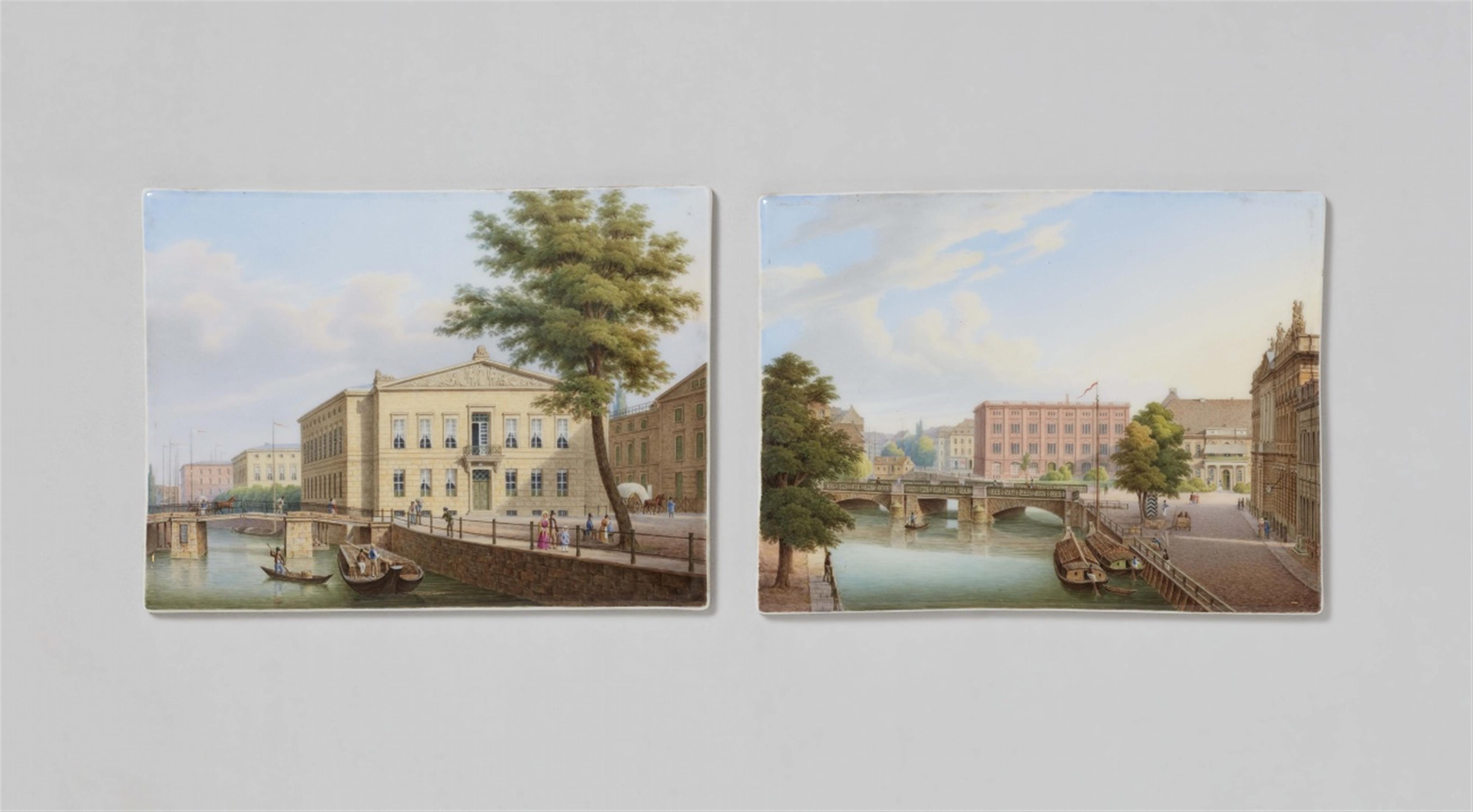A pair of porcelain plaques with depictions of buildings by Schinkel in Berlin
1. Depicting the facade of the “Zeughaus“ on the right and the palace bridge and Lustgarten on the left. 2. Depicting the “Neue Packhof“ and the iron bridge on the left and the Lustgarten on the right. 11.4 cm x 15.4 cm, with the later giltwood frame c. 21 cm x 25 cm.
C. 1838 – 42.
Both porcelain platters depict important amendments made to the area surrounding the Spree Island in the centre of Berlin. These reconstruction projects were planned and executed by Karl Friedrich Schinkel from 1819 onwards.
The view with the Bauschule, now the Bauakademie, on the site of the Altes Packhof, follows the painting by Carl Daniel Freydanck from 1838 (Charlottenburg Palace, KPM Archive, inv. no. 34). The palace bridge spanning the Spree Canal can be seen in the left foreground. The third and central arch planned by Schinkel, which completes the Neoclassical architecture today, was not built until 1912. The predecessor building shown here was not vaulted in the middle and had ship's hatches; the railing could be turned to the side. The sculptural ornamentation which is visible/reconstructed today with large figures on massive pedestals was not added until 1842, but was already planned by Schinkel, albeit in a different form.
The Neues Packhof, which Schinkel moved to Kupfergraben, was built between 1829 and 1831. The Iron Bridge, installed only in 1796, received sandstone piers in 1825 due to corrosion, which can be seen here. The central façade, illuminated by the midday sun, faced the Lustgarten. It belonged to the residence of the Director of General Taxation. Behind the row of trees was the main tax office. Other buildings of the Packhof extended to the tip of the island. Today, the Pergamon Museum and the Bode Museum are located on this site, and the James Simon Gallery stands on the site of the directorate building.
Certificate
Private Collection, Lower Saxony.
Provenance
Niedersächsiche Privatsammlung.
Literature
The painting by Freydanck published in Carl Daniel Freydanck 1811 - 1887. Ein Vedutenmaler der KPM, Berlin 1987, no. 5.




